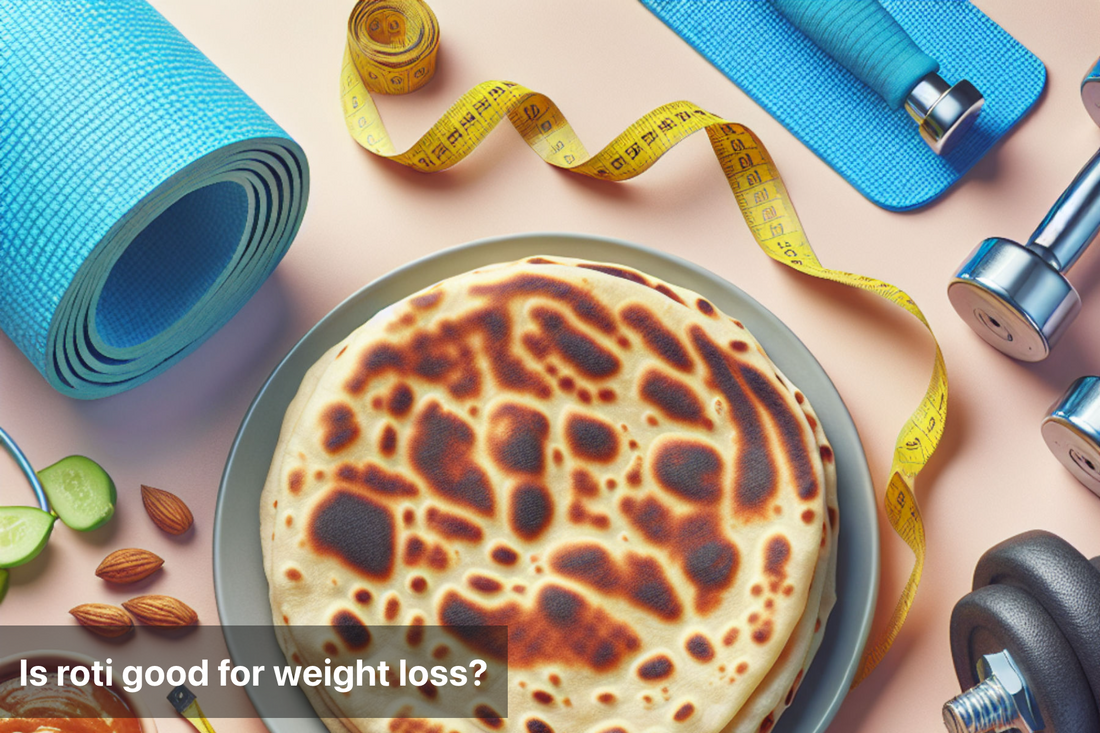
Is roti good for weight loss?
Share
Roti is a staple food in many South Asian countries, particularly India and Pakistan. Traditionally made from whole wheat flour, it demonstrates a rich cultural legacy. It is often enjoyed with various dishes, playing a significant role in daily meals. Given its widespread consumption, questions about its health benefits, particularly concerning weight management, naturally arise.
It is essential to understand its nutritional components in the broader context of a balanced diet. Roti can provide a source of complex carbohydrates, which are essential for sustained energy. This can be especially beneficial if you're making lifestyle changes to lose weight. However, it’s not just the roti itself; how you prepare it and what you pair it with can significantly impact its effect on weight loss.
For instance, opting for whole wheat or multigrain varieties can offer more fiber and nutrients, making them preferable options. Besides the type of roti, portion control and accompanying foods also matter. In conclusion, while roti can fit into a weight loss plan, awareness of these factors is crucial to ensure it contributes positively to dietary goals.

Nutritional Value of Roti
Nutritional Table for Roti (1 medium-sized roti, ~40g)
|
Nutrient |
Amount |
% Daily Value (DV) |
|---|---|---|
|
Calories |
100 kcal |
5% |
|
Carbohydrates |
22 g |
7% |
|
Fiber |
3 g |
12% |
|
Protein |
3 g |
6% |
|
Fat |
0.5 g |
1% |
|
Iron |
1 mg |
6% |
|
Calcium |
10 mg |
1% |
|
Magnesium |
24 mg |
6% |
Types of Roti and Their Impact on Weight Loss
When considering the types of roti, several options stand out, each with unique nutritional benefits that can impact weight loss.
-
Whole Wheat Roti: High in fiber, aids digestion and satiety, supports weight loss.
-
Multigrain Roti: Rich in nutrients and fiber, helps with metabolism and digestion.
-
Jowar (Sorghum) Roti: Gluten-free, high in fiber and protein, low glycemic index, controls hunger.
-
Bajra (Pearl Millet) Roti: Gluten-free, high in fiber and iron, promotes fullness and aids weight loss.
-
Ragi (Finger Millet) Roti: High in calcium and fiber, stabilizes blood sugar, promotes fullness.
-
Chickpea Flour (Besan) Roti: High in protein and fiber, keeps you full, reduces overeating.
Health Coach Pooja Shinde (MSc. Nutrition, food science & technology — diabetes educator) says "The secret to losing weight is not about deprivation, but about making smarter choices. Roti, when enjoyed in moderation, can be part of a balanced diet that nourishes both body and mind."
Incorporating Roti into a Weight Loss Diet
|
Strategy |
Description |
Benefit for Weight Loss |
|---|---|---|
|
Use Whole Wheat Flour |
Opt for whole wheat flour instead of refined flour. |
Provides more fiber and nutrients, aids digestion. |
|
Control Portion Size |
Stick to one medium-sized roti (about 40g per serving). |
Prevents overeating and maintains a balanced calorie intake. |
|
Avoid Oil and Ghee |
Cook roti without added oil, butter, or ghee. |
Keeps the calorie count low and helps in weight management. |
|
Pair with Vegetables & Lean Proteins |
Serve roti with low-calorie, high-fiber vegetables or lean proteins like chicken or tofu. |
Adds essential nutrients, promotes fullness, and reduces calorie intake. |
|
Limit High-Calorie Sides |
Avoid serving roti with calorie-dense gravies, fried foods, or rich curries. |
Prevents excessive calorie intake from accompanying dishes. |

Benefits of Roti in a Weight Loss Diet
-
High in Fiber: Whole wheat roti aids digestion and keeps you full longer, reducing cravings.
-
Low in Fat: Roti is naturally low in fat, making it a light choice for weight management.
-
Protein Content: Provides moderate protein, which supports muscle maintenance during weight loss.
-
Low Glycemic Index: Whole wheat roti releases energy slowly, helping to control blood sugar levels.
-
Versatile & Filling: Pairs well with vegetables and lean proteins, making meals satisfying without excess calories.
Summary
In this blog, we explored the relationship between roti and weight loss, addressing the question, "Is roti good for weight loss?" We delved into the nutritional value of roti, highlighting that it is a source of carbohydrates, fiber, and essential nutrients. These components can support a balanced diet, making roti a viable option for those aiming to lose weight.
We examined various types of roti, such as whole wheat, multigrain, and besan, each presenting unique nutritional benefits. Understanding "which roti is best for weight loss" helps consumers make informed decisions. Whole wheat roti, for instance, is rich in fiber and can keep you feeling full longer, potentially reducing overall calorie intake.
Incorporating roti into a weight loss regimen requires mindful strategies. Proper portion control, pairing it with healthy ingredients, and considering your overall dietary needs are essential. Roti can indeed fit into a weight loss plan when consumed mindfully and in moderation.
FAQs
-
Can I eat roti every day and still lose weight?
Yes, you can eat roti daily, provided you maintain portion control and balance it with a healthy diet and exercise routine. -
Is roti better than rice for weight loss?
Both roti and rice can be part of a weight loss plan if consumed in moderation. Roti offers more fiber, which can help with satiety, but rice can be easier to digest for some people. -
What is the best time to eat roti for weight loss?
It's ideal to eat roti during lunch or dinner when your body needs a steady source of energy. Consuming roti earlier in the day helps prevent overeating later. -
Can I substitute roti with other types of bread for weight loss?
Yes, whole grain breads like multigrain or sprouted wheat bread can be good alternatives, as they also offer fiber and essential nutrients. -
How many rotis can I eat in a day for weight loss?
Typically, one to two medium-sized rotis a day is considered appropriate for weight loss. However, the total number should depend on your individual calorie needs.
